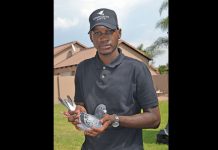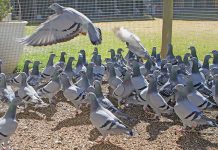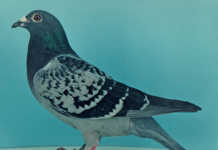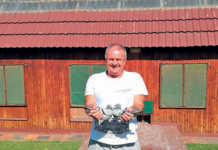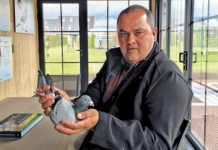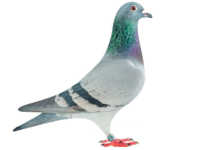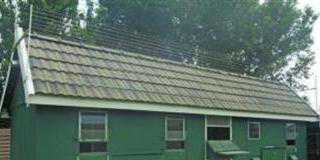Roger Harris has been a member of the Plettenberg Bay Pigeon Club since 1993. It’s one of five clubs that make up the Suid Kaap Duiwe Unie. The union has about 50 members who enter between 900 and 1 000 pigeons in its weekly races. Roger says that because his grandfather, dad and most of his uncles were all racing pigeon enthusiasts, lofts have been like a second home for him since the age of two. By the time he was seven, he was managing his own loft.
Although he hasn’t actively participated in pigeon races for the past three seasons due to relocating and building new lofts, Roger has nonetheless managed to breed some high quality youngsters despite the upheavals, and has placed a few on the annual union and club auction races. Anyone can buy these youngsters and then compete for the auction proceeds as prize money.
Winners
One of Roger’s birds was purchased by Danie Barnard, and scored three wins, two of which were in union races. Dennis Barty from the Knysna Racing Pigeon Club purchased another of Roger’s youngsters at the Knysna Club sale, scored third in the sale race and then went on to win two unions, including a 900km combine race. There have been many highlights in Roger’s own racing career, but winning 11 union races against about 140 members in 2005 is one of the most memorable.
The widowhood system
On a recent trip to the UK, Roger spent a few days with champion fancier Paul Stokes of P&R lofts and visited the lofts of Frank Bristow and Geoff and Catherine Cooper. “It was an absolute honour to handle so many national and international winners from champion breeders,” he says. Most Brits prefer the ‘widowhood system’ when it comes to racing, adds Roger.
Once the pigeons have mated and produced a round of youngsters, the hens are separated from the cocks and only shown to them for a short while prior to races. It’s believed the cocks will then put in an extra effort to hurry home to get back to the hens. Over the years, Roger’s introduced pigeons from top local and overseas bloodlines into his loft and crossed them with his ‘old family’ with great success. His breeding recipe is to inbreed different pigeon lines as close as possible and then cross them out to attain hybrid vigour for racing.
Training
Roger’s training method, meanwhile, is kept simple. Once the pigeons are ranging and are working well around the loft during home training, Roger gets them on the road (100km) a few times, and then the birds are ready for the first race. The pigeons are trained in the mornings only. Those not entered into Saturday’s race are road-trained on the weekend from 180km.
Advice for beginners
Roger’s advice to beginners is to start with pigeons from a top fancier and try and create a family, and only then bring in other top birds for an out-cross. “Make sure you keep the pigeons healthy, use a good balanced feed and keep it simple,” he adds.
Also, don’t listen to every Tom, Dick and Harry. “Instead take advice from a champion fancier you’ve learnt to trust,” says Roger.
As for fanciers interested in entering pigeons into one-loft racing events, Roger suggests sending birds that can take a ‘punch’ and are bred from a pigeon family known to produce consistent racers.
Contact Thomas Smit on 011 680 4778 or at [email protected]. Please state ‘Pigeons’ in the subject line of your email.

